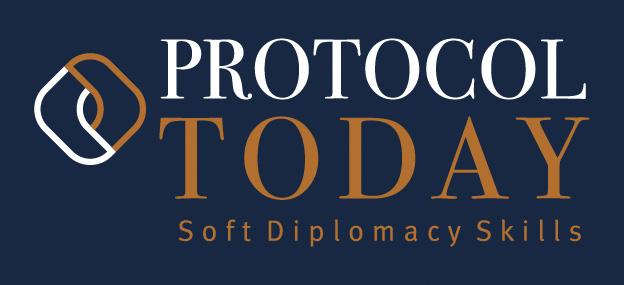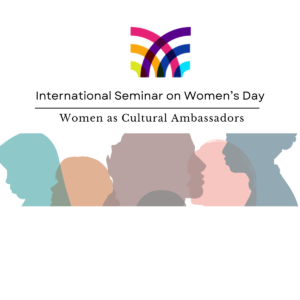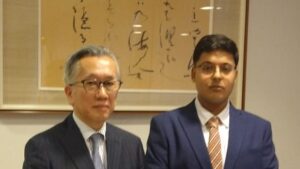“Diplomacy has expanded its remit, moving far beyond bilateral political relations between states into a multilateral, multifaceted enterprise encompassing almost every realm of human endeavour,” said former UN Secretary-General Kofi Annan.
Multilateral diplomacy takes various forms: some are more institutional, such as the United Nations, while others are less formal and less identifiable in terms of parameters and rules. These latter are extremely difficult for African states, even though these fora, such as the World Economic Forum or G20, are extremely influential. It is the practice of involving more than two nations or parties in pursuing diplomatic solutions to supranational problems. Since multilateral diplomacy is a rapidly evolving industry, new forms regularly emerge, making it difficult to describe all types comprehensively.
Actors: Sovereign states remain the primary actors in multilateral diplomacy, but non-state actors such as non-governmental organisations, civil society representatives, and the business community are increasingly involved. Despite the importance of adhering to the constitutive acts of various international organisations, including their rules of procedure, multilateral diplomacy embraces new forms of interaction regularly, reflecting the need for flexibility and rapid adaptability to a dynamic environment.
Methods: In today’s world, only a tiny portion of multilateral diplomatic activity occurs in formal and solemn settings. The interaction between various actors takes many forms, including informal contacts and spontaneous coalitions of the willing.
Diplomatic Hubs
Diplomatic hubs in New York, Geneva, and Vienna will remain important in the future. Diplomats on the ground are critical, especially during the lockdown and social distancing. While diplomatic hubs, like all diplomatic practices, face both continuity and change, we can say that they are now more important than ever. Acknowledging context and nuance in multilateral diplomacy and dealing with contentious issues and crises necessitates an on-the-ground presence. Diplomatic presence at multilateral hubs is critical due to significant time differences between multilateral hubs and some capitals and potential future travel restrictions. Diplomatic representation at key multilateral institutions is also symbolic, signalling a commitment to multilateralism for functional and normative reasons.
Multilateral diplomacy by video conference: practices, procedures, protocol, and platforms
At the heart of the diplomatic practice is the ability to overcome communication barriers and positional distances. As a result, mediating physical distance and video conferencing challenges is a new diplomatic task, one for which diplomats are already prepared as “mediators of estrangement.” Negotiating the modalities of in-person, hybrid, and online meetings have become a new challenge for multilateral institution and meeting chairs and presidents. As the Human Rights Council (HRC) demonstrates, committed leadership and ongoing dialogue with member states to build trust are critical ingredients in successfully navigating the changed circumstances.
The diplomatic protocol has adapted to social distancing measures, such as reorganising and framing photo opportunities at high-level meetings. While this complicates meeting organisation, it does not call into question established protocol rules. Since some diplomatic practice has shifted toward video conferencing, key challenges include addressing security concerns, adapting to changes in communication and negotiation dynamics, providing translation services, and maintaining a stable Internet connection. Concerns have been raised about creating an unequal playing field and the risk of exclusion due to bandwidth requirements and security constraints. Small and developing countries face a unique set of challenges in this regard.
State of Multilateral Diplomacy among African Countries.
Representatives from African countries are outnumbered by negotiating teams from other countries who arrive better prepared; African countries must maximise their resources and collaborate to combine their areas of expertise. Diplomats in Africa are also woefully undertrained, and organisations such as the African Union (AU) could do more to improve their members’ diplomatic skills.
African diplomats should not be naive about the world and emerging powers’ multilateral strategies. Other countries are also developing countries does not necessarily imply that they are looking out for Africa’s best interests. The rise of multistakeholder diplomacy adds to the complication. It is difficult for African countries to open to this type of international relations. Still, they must do so to have genuine grassroots representation defending their points of view and promoting their interests.
Multilateral Diplomacy and the United Nations Today
As the world faces new and ongoing challenges such as globalisation, international terrorism, and a slew of other global issues, the United Nations and its critical attribute-multilateral diplomacy-are more crucial than ever. With new and updated essays detailing the experiences of a diverse group of practitioners and scholars working in diplomacy, this emerging era covers the fundamental characteristics of multilateral diplomacy as it is conducted within the United Nations framework in even greater breadth and depth.
Today’s Multilateral Diplomacy and the United Nations offers valuable insights from various perspectives on how diplomacy is practised, making it required reading for aspiring diplomats, international business leaders, and students at all levels. This volume’s contributors bring a wealth of knowledge and experience to examine five areas of multilateral diplomacy: UN diplomacy, crisis diplomacy, international economic diplomacy, UN summits and “citizen diplomats,” and non-governmental diplomacy.
In conclusion, context is critical in multilateral diplomacy. Diplomats on the ground are far better positioned to detect and interpret nuances and signals. The incorporation and dissemination of digital tools into the practice of diplomacy has had a significant impact on multilateral diplomacy today.
ADVERTISE YOUR COMPANY INTERNATIONALLY IN THE MAGAZINE GLOBAL MINDSET
ProtocolToday Magazine
Share this article

Writer by Eric Muhia, International Studies and Diplomacy Graduate Student
02 May 2022, Kenya
Category: Diplomacy
Reference: EM02052022D




